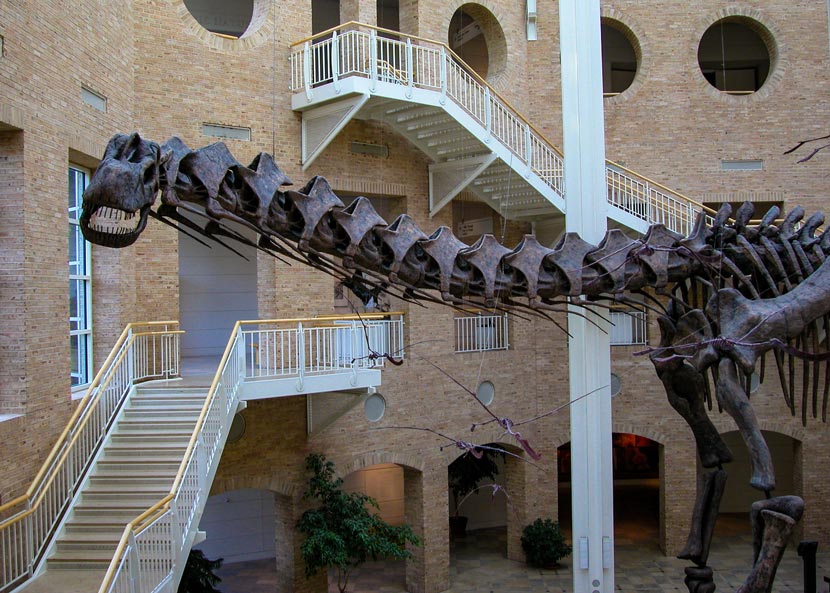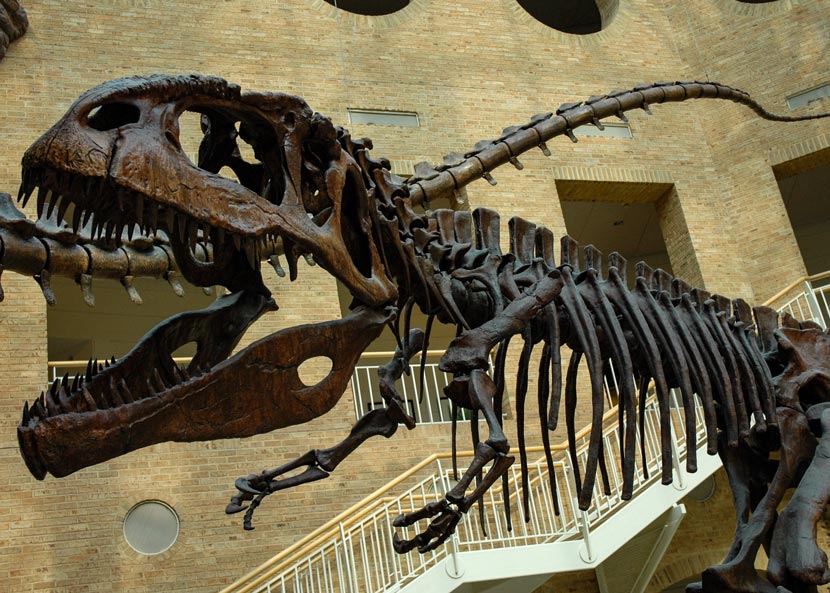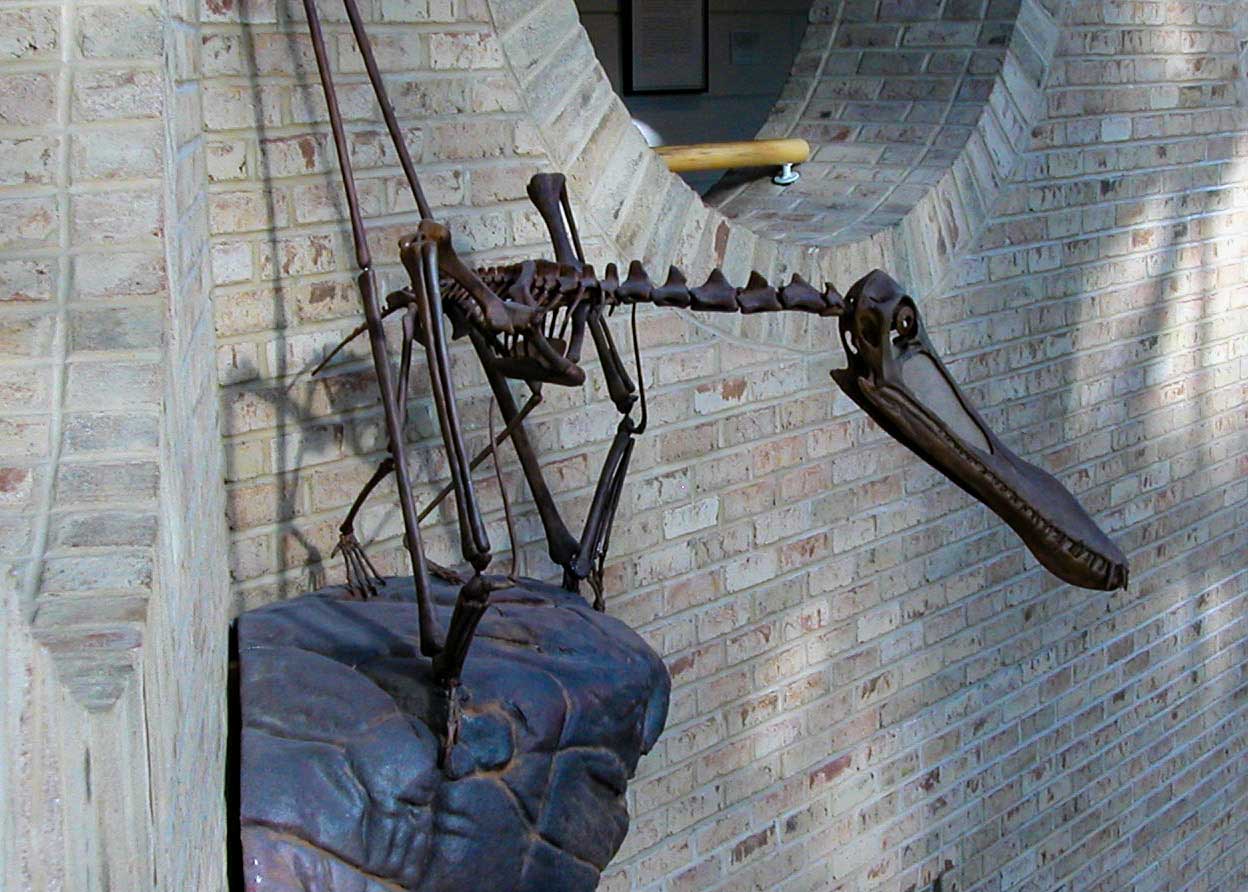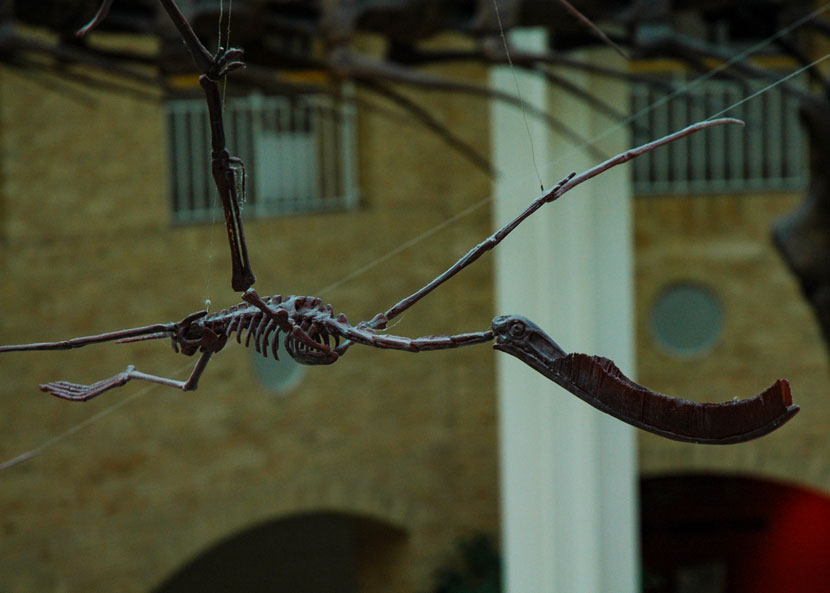
Giants of the Mesozoic
A prehistoric battle of gigantic proportions unfolds in the permanent exhibition Giants of the Mesozoic, filling the Museum's Great Hall. This exhibition recreates life in the badlands of Patagonia, Argentina, where the largest dinosaurs in the world were unearthed.
Visitors stand at the feet of some of the world's largest dinosaurs immersed in a prehistoric snapshot that surrounds them in a predator-versus-prey clash.
Argentinosaurus defends itself from a surprise attack by Giganotosaurus, while a flock of 21 Pterodaustro and three Anhanguera scatter overhead in reaction to the commotion.
Viewers can observe the interaction between four types of prehistoric reptiles from the Cretaceous Period of 145-65 million years ago, as well as other creatures with which they shared their world.
Giants of the Mesozoic includes additional fossil casts to further demonstrate the diversity of prehistoric life in Patagonia. The simulated rockwork beneath the dinosaurs contains casts of animals and plants that lived during the Cretaceous period. Visitors will also find pterosaur and dinosaur tracks, remnants from an Auracaria tree, a fossilized crocodile and a turtle shell.
All of the fossils on display in Giants of the Mesozoic are cast replicas of the original specimens. The fossilized bones remain in Argentina, where they are considered a national treasure.
Cast of Characters

Argentinosaurus
This exhibition contains the world's first fully mounted Argentinosaurus (ar-gin-TEEN-oh-SAWR-us),the largest dinosaur ever classified. It weighed over 100 tons and measured more than 123-feet long, the length of nearly four school buses. Uncovered in Patagonia, Argentina, its name means "Argentine Lizard." This plant-eating creature feasted primarily on conifers and lived 90 million years ago.

Giganotosaurus
Giganotosaurus (gee-ga-NOH-toh-SAWR-us), which weighed 8-10 tons, is the world's largest meat-eating dinosaur. The scissor-shaped teeth of this ferocious hunter measured up to eight inches long. This 47-foot-long creature, whose name means "Great Southern Lizard," lived 95 million years ago. Giganotosaurus is approximately four feet longer than Tyrannosaurus rex, and its 6-foot-long skull was as big as a human's entire body.

Anhanguera
Anhanguera (AN-han-GER-uh) is a flying reptile, or pterosaur, that lived 120 million years ago. Named "Old Devil," this bird-like reptile's wingspan measured 18-19 feet. Its diet consisted of fish, which were likely consumed while in flight.

Pterodaustro
Pterodaustro (TER-oh-DAS-troh) is a smaller flying reptile whose name means "Wing of the South." A flock of 21 pterosaurs, each with a wingspan of 52 inches, soars over the Great Hall. These creatures had roughly 500 bristle-like teeth that sifted small organisms out of the water. Short blunt teeth in its upper jaw enabled it to chop its prey into smaller pieces. Pterodaustro lived 125 million years ago.
We are grateful to the following sponsors, whose generosity has made this exhibition possible: Miller Family Foundation; Wells Fargo Foundation; Livingston Foundation, Inc.; The David, Helen and Marian Woodward Fund; The Arthur M. Blank Family Foundation; The Raymond M. Cash Foundation, Inc.; United Parcel Service; The Price Gilbert, Jr. Charitable Fund; and Frances Wood Wilson Foundation, Inc.









